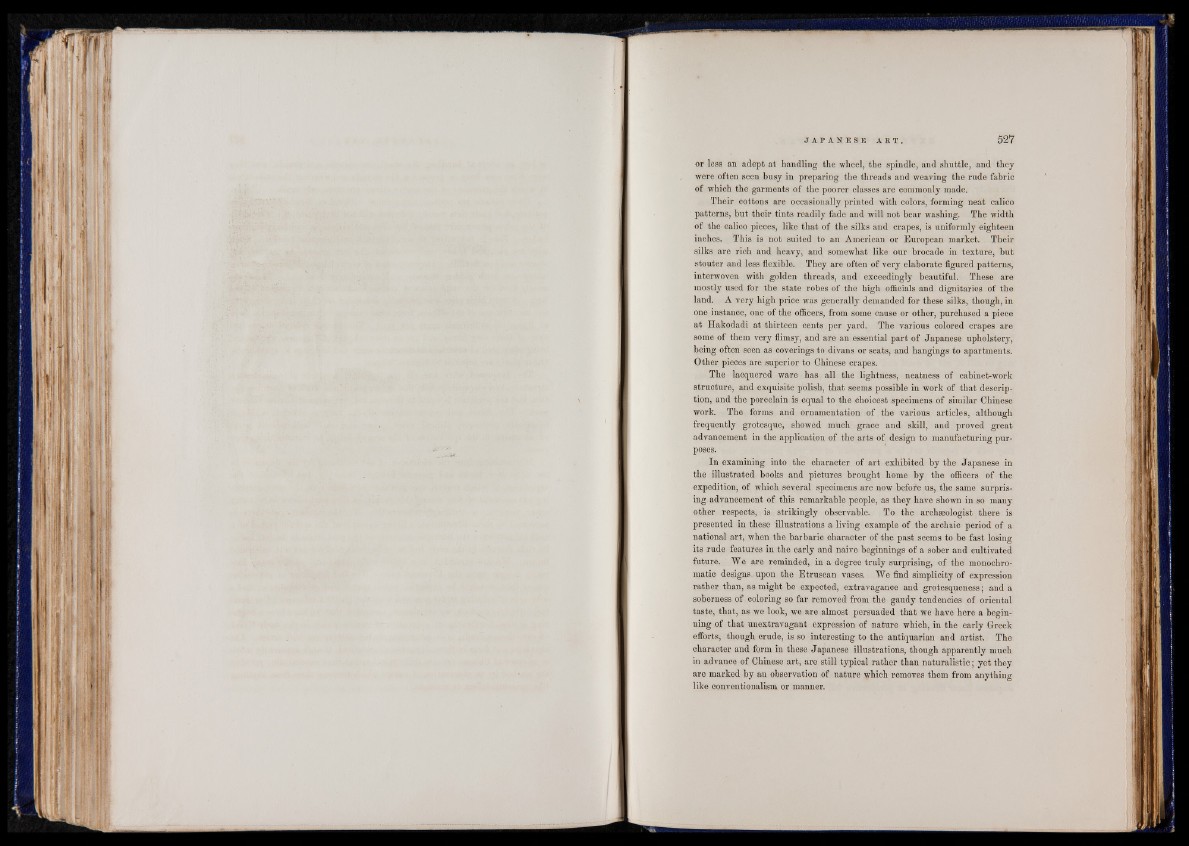
or less an adept at handling the wheel, the spindle, and shuttle, and they
were often seen busy in preparing the threads and weaving the rude fabric
of which the garments of the poorer classes are commonly made.
Their cottons are occasionally printed with colors, forming neat calico
patterns, but their tints readily fade and will not bear washing. The width
of the calico pieces, like that of the silks and crapes, is uniformly eighteen
inches. This is not suited to an American or European market. Their
silks are rich and heavy, and somewhat like our brocade in texture, but
stouter and less flexible. They are often of very elaborate figured patterns,
interwoven with golden threads, and exceedingly beautiful. These are
mostly used for the state robes of the high officials and dignitaries of the
land. A very high price was generally demanded for these silks, though, in
one instance, one of the officers, from some cause or other, purchased a piece
at Hakodadi at thirteen cents per yard. The various colored crapes are
some of them very flimsy, and are an essential part of Japanese upholstery,
being often seen as coverings to divans or seats, and hangings to apartments.
Other pieces are superior to Chinese crapes.
The lacquered ware has all the lightness, neatness of cabinet-work
structure, and exquisite polish, that seems possible in work of that description,
and the porcelain is equal to the choicest specimens of similar Chinese
work. The forms and ornamentation of the various articles, although
frequently grotesque, showed much grace and skill, and proved great
advancement in the application of the arts of design to manufacturing purposes.
In examining into the character of art exhibited by the Japanese in
the illustrated books and pictures brought home by the officers of the
expedition, of which several specimens are now before us, the same surprising
advancement of this remarkable people, as they have shown in so many
other respects, is strikingly observable. To the archaeologist there is
presented in these illustrations a living example of the archaic period of a
national art, when the barbaric character of the past seems to be fast losing
its rude features in the early and naive beginnings of a sober and cultivated
future. We are reminded, in a degree truly surprising, of the monochromatic
designs upon the Etruscan vases. We find simplicity of expression
rather than, as might be expected, extravagance and grotesqueness; and a
soberness of coloring so far removed from the gaudy tendencies of oriental
taste, that, as we look, we are almost persuaded that we have here a beginning
of that unextravagant expression of nature which, in the early Greek
efforts, though crude, is so interesting to the antiquarian and artist. The
character and form in these Japanese illustrations, though apparently much
in advance of Chinese art, are still typical rather than naturalistic; yet they
are marked by an observation of nature which removes them from anything
like conventionalism or manner.